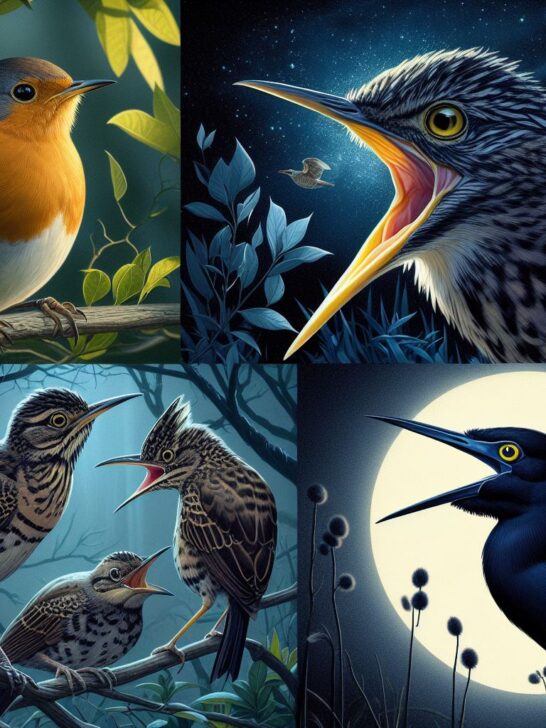While many birds greet the break of dawn with their melodic songs, there exists a fascinating array of avian species that serenade the darkness of night with their captivating chirps and calls. In the United States, a diverse range of nocturnal birds can be found, each contributing to the nighttime symphony in its own unique way. From the haunting hoots of owls to the enchanting trills of nightingales, these feathered creatures add an enchanting ambiance to the nocturnal landscape. In this article, we will delve into the lives of nocturnal singing birds found in the USA, exploring their behaviors, habitats, and the significance of their nighttime melodies.
Post Contents
- American Robin: (Turdus migratorius)
- American Woodcock: (Scolopax minor)
- Barred Owl: (Strix varia)
- Barn Owl: (Tyto alba)
- Black Rail: (Laterallus jamaicensis)
- Black-crowned Night Heron: (Nycticorax nycticorax)
- Common Nightingale: Luscinia megarhynchos
- Common Loon: Gavia immer
- Eastern Screech-Owl: Megascops asio
- Eastern Whip-poor-will: Antrostomus vociferus
- Eurasian Nightjar: Caprimulgus europaeus
- European Robin: Erithacus rubecula
- Great Potoo: Nyctibius grandis
- Great Reed Warbler: Acrocephalus arundinaceus
- Hermit Thrush: Catharus guttatus
- Killdeer: Charadrius vociferus
- Northern Mockingbird: Mimus polyglottos
- Pauraque: Nyctidromus albicollis
- Tawny Owl: Strix aluco
- Upland Sandpiper: Bartramia longicauda
- Western Meadowlark: Sturnella neglecta
- Yellow-breasted Chat: Icteria virens
- Summary:
American Robin: (Turdus migratorius)
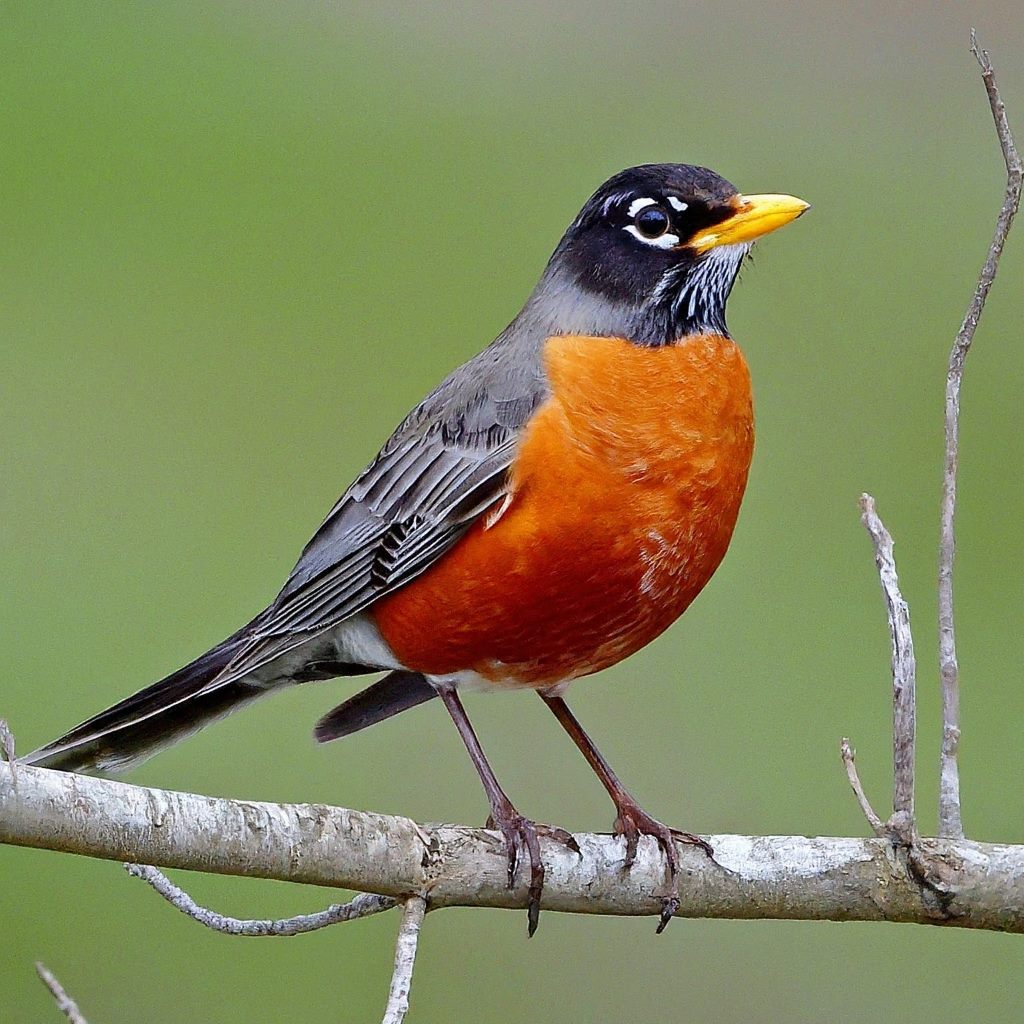
The American Robin, often associated with the break of dawn, also lends its voice to the nighttime chorus. During the breeding season, males can be heard singing throughout the night to defend their territories and attract mates. Their song is a melodious series of whistled phrases, often described as cheerful and flute-like. Despite being diurnal birds, American Robins may sing at night when the ambient light is sufficient, especially in urban areas where artificial lighting extends into the night.
- This familiar songbird is widely distributed across North America, known for its cheerful song and reddish-orange breast.
- They are ground foragers, primarily feeding on insects and fruits.
- Migratory birds, spending winters in southern Canada to central Mexico and along the Pacific coast.
- Adaptable and common backyard visitors, easily attracted to bird feeders.
American Woodcock: (Scolopax minor)
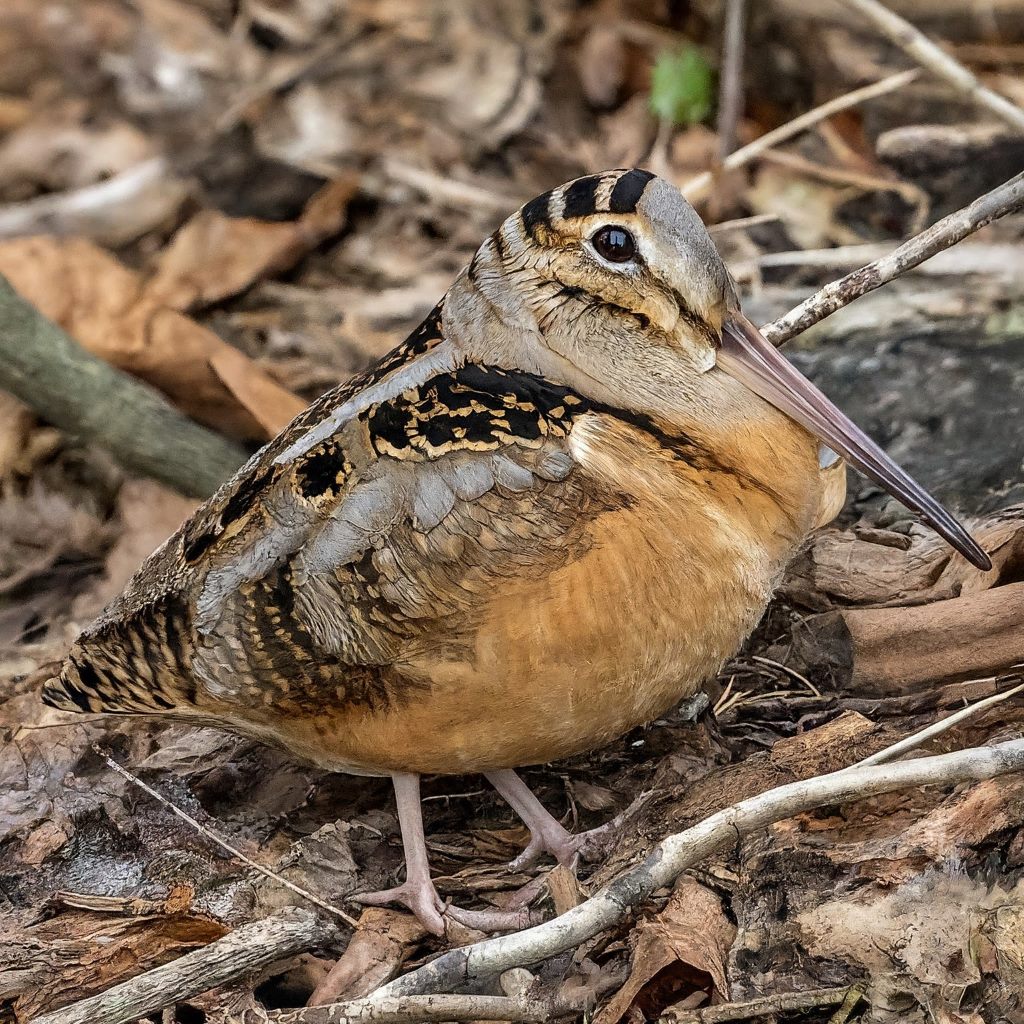
The American Woodcock is known for its unique courtship display, which includes a remarkable aerial ballet accompanied by a series of nasal “peent” calls. While primarily crepuscular, American Woodcocks may also vocalize at night, particularly during the peak of the breeding season. Their calls serve to establish territories and attract potential mates. The distinctive “peent” call followed by a series of twittering sounds is a familiar sound in the wooded habitats of eastern North America.
- A nocturnal wading bird found in forested areas of eastern North America.
- Their long, sensitive bill excels at probing the soil for earthworms and insect larvae.
- During courtship displays, males perform unique “sky dances,” spiraling upwards with chirping vocalizations.
- Conservation concerns exist due to habitat loss and changes in forest management practices.
Barred Owl: (Strix varia)
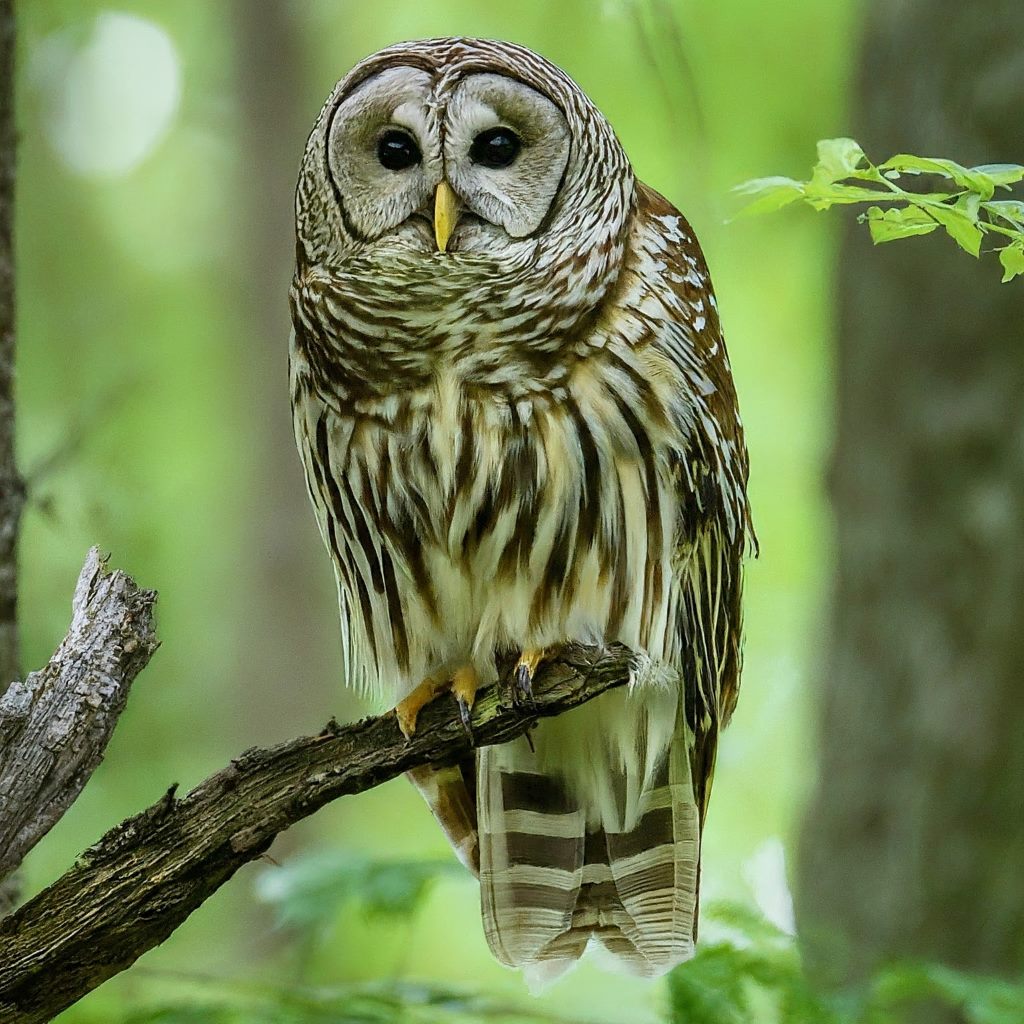
The Barred Owl is a master of the nighttime forest, known for its distinctive hooting calls that echo through the woods after dark. With their deep, resonant “who-cooks-for-you, who-cooks-for-you-all” call, Barred Owls establish territories and communicate with other owls. Their vocalizations are particularly pronounced during the breeding season, as males and females engage in duets to reinforce pair bonds. These nocturnal hunters are well-adapted to low light conditions, with keen senses that allow them to locate prey such as small mammals and birds in the darkness of night.
- Found throughout North America, this medium-sized owl inhabits forests and woodlands.
- Primarily hunts small mammals and rodents, with silent flight aiding in their stealthy approach.
- Known for their distinctive “who-cooks-for-who” call, often heard at night or dusk.
- Their populations are stable and widespread, facing potential threats from habitat fragmentation and pesticide use.
Barn Owl: (Tyto alba)
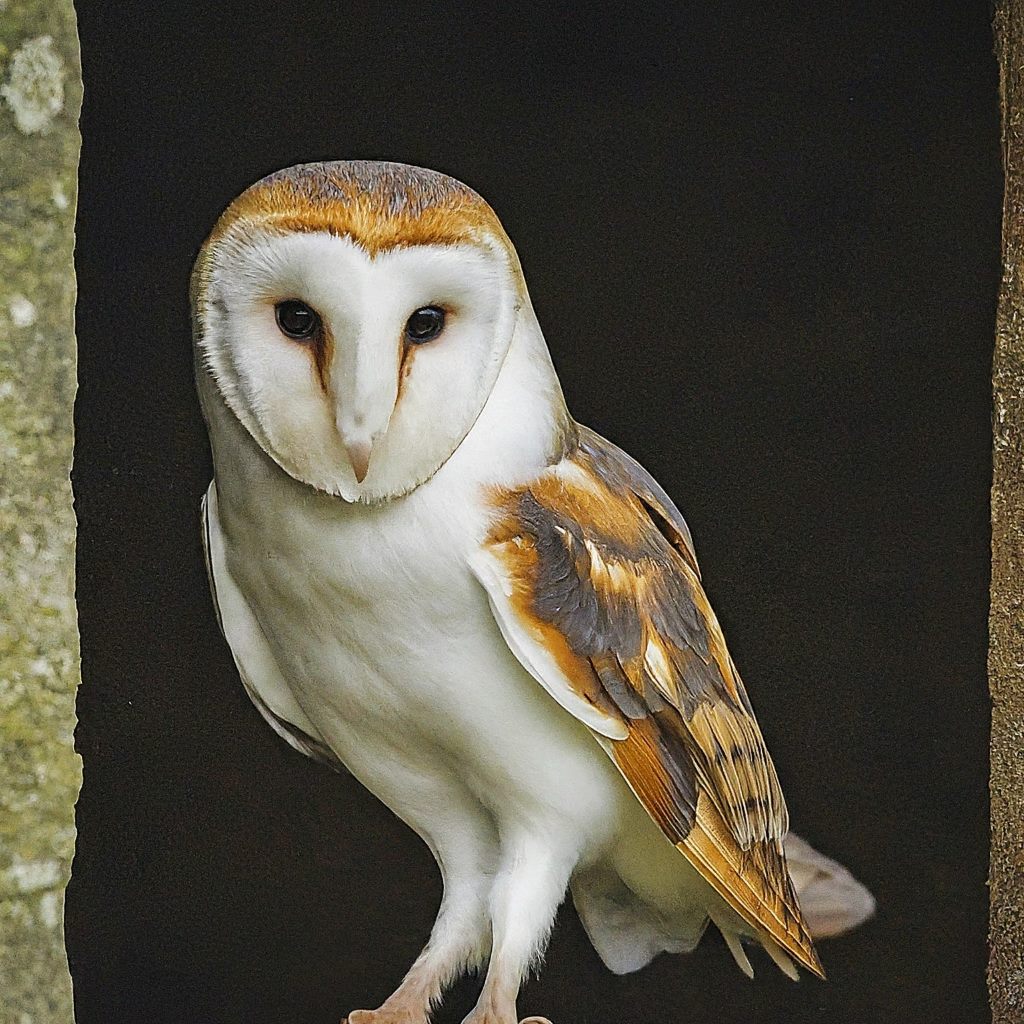
The Barn Owl, with its heart-shaped face and eerie screeches, is a quintessential nocturnal bird of prey. Unlike many other owl species, Barn Owls are known for their raspy, hissing calls rather than hoots. These calls serve multiple purposes, including territorial defense, courtship displays, and communication between mated pairs. Barn Owls are expert hunters, relying on their acute hearing and silent flight to ambush prey such as rodents and small mammals under the cover of darkness.
- Widely distributed across the globe, this iconic owl favors open habitats like grasslands and farms.
- Possesses exceptional hearing, allowing them to pinpoint prey even in complete darkness.
- Often utilize human-made structures like barns and abandoned buildings for nesting.
- Considered beneficial due to their control of rodent populations, facing potential threats from habitat loss and pesticide use.
Black Rail: (Laterallus jamaicensis)
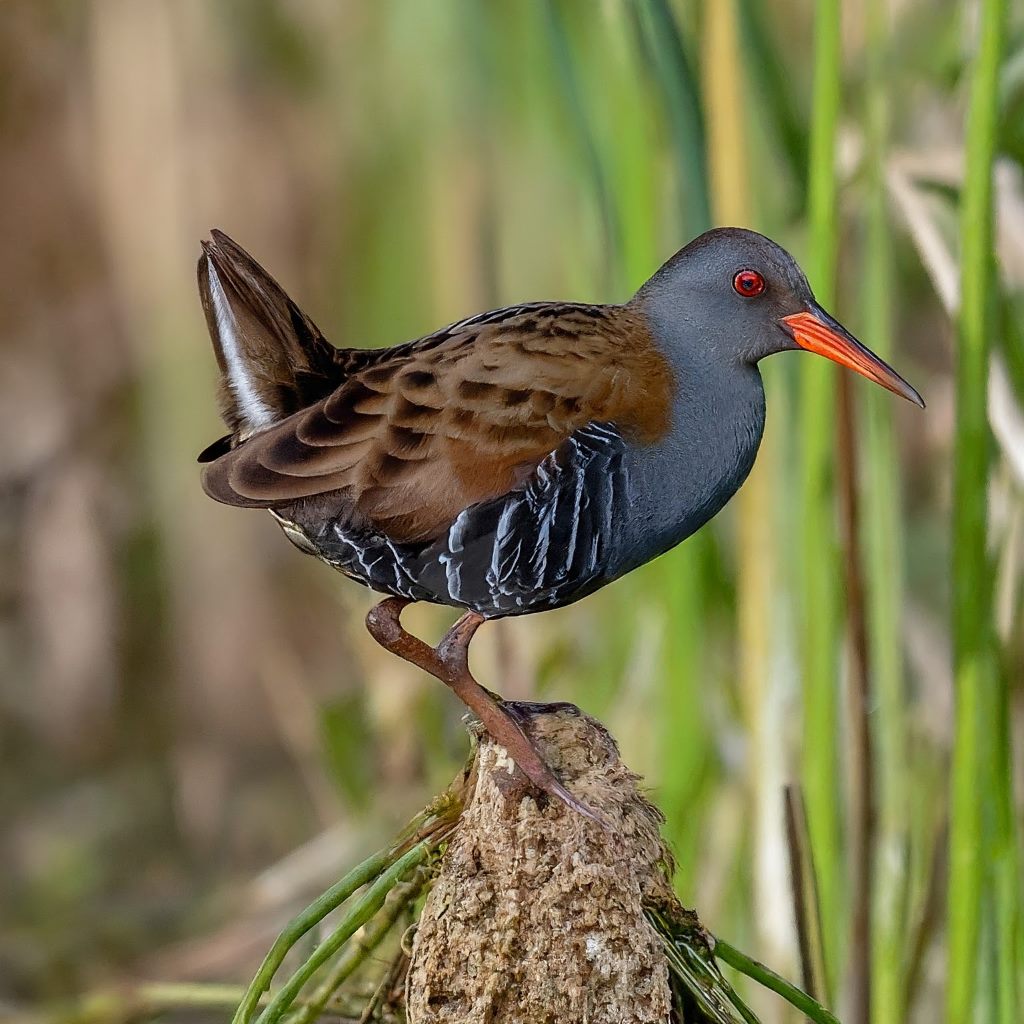
The secretive Black Rail is a small, marsh-dwelling bird known for its distinctive “kickee-doo” call, which can be heard emanating from dense reed beds and wetland habitats at night. Despite their diminutive size, Black Rails possess powerful vocalizations that carry over long distances, allowing them to communicate with other rails and establish territories in their marshy homes. Their nocturnal habits and cryptic plumage make them elusive and challenging to observe in the wild.
- This small, secretive rail inhabits freshwater marshes and wet meadows primarily in the eastern and central United States.
- Prefers dense vegetation for cover, making them challenging to observe.
- Feeds on insects, snails, and other small invertebrates.
- Listed as a Vulnerable species due to habitat loss, degradation, and predation.
Black-crowned Night Heron: (Nycticorax nycticorax)

True to its name, the Black-crowned Night Heron is most active during the twilight hours and throughout the night. While they are primarily visual hunters, relying on their keen eyesight to detect prey in dim light, Black-crowned Night Herons also vocalize with a series of harsh “quawk” calls during their nocturnal foraging expeditions. These herons are commonly found in wetland habitats, where they stalk fish, frogs, and other aquatic creatures under the cover of darkness.
- This medium-sized heron is found throughout much of the world, including parts of Europe, Asia, and North and South America.
- Primarily nocturnal, they hunt fish, frogs, and other small prey in wetlands and marshes.
- Often found nesting in colonies with other herons and egrets.
- Considered a species of Least Concern globally.
Common Nightingale: Luscinia megarhynchos
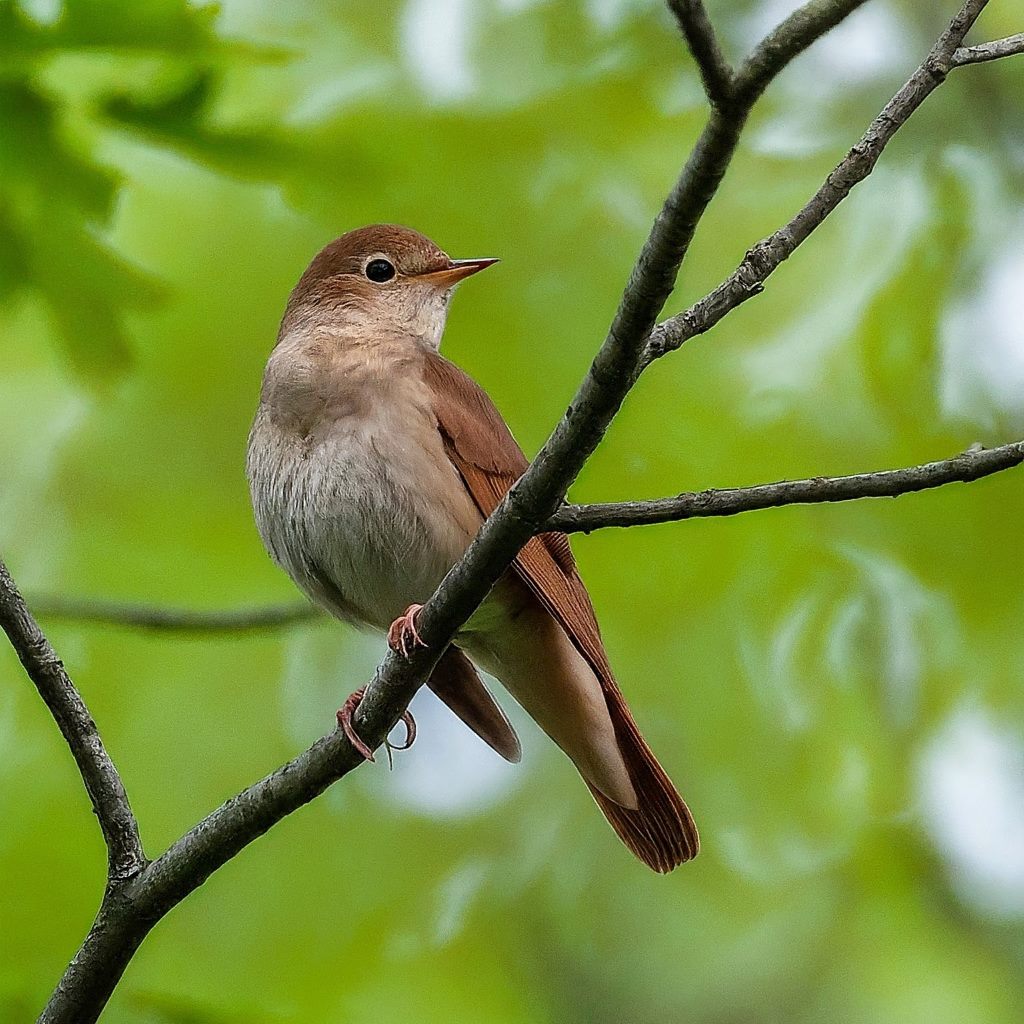
The Common Nightingale is renowned for its enchanting, melodious song, which fills the nighttime air with its rich, flute-like tones. These secretive birds are most active during the darkness of night, when their beautiful songs serve as territorial markers and courtship displays. Common Nightingales are highly migratory, traveling long distances between their breeding and wintering grounds, where they inhabit woodlands, scrublands, and gardens. Despite their small size, their powerful vocalizations can be heard over considerable distances, making them a cherished symbol of the nightingale’s song.
- This small, brown songbird is renowned for its beautiful and complex song, often heard at night in Europe and Asia.
- Primarily insectivorous, they also feed on berries and other small fruits.
- Solitary nesters, building their nests in dense vegetation near the ground.
- Globally categorized as Least Concern, but declines in some European populations raise concerns.
Common Loon: Gavia immer

The haunting, tremulous calls of the Common Loon are a familiar sound on North American lakes and waterways during the nighttime hours. These iconic birds are well-adapted to their aquatic lifestyle, with their eerie wails serving as communication signals between mates and family members. Common Loons are skilled divers, using their strong legs and feet to propel themselves underwater in search of fish, their primary prey. Their haunting cries echo across the water’s surface, adding to the mystique of the nocturnal wilderness.
- This large diving bird is found in North America, breeding in freshwater lakes and migrating to coastal waters in winter.
- Expert swimmers and divers, they primarily feed on fish caught underwater.
- Known for their loud, yodeling calls, especially during territorial disputes.
- Classified as Near Threatened due to habitat loss, pollution, and lead poisoning.
Eastern Screech-Owl: Megascops asio
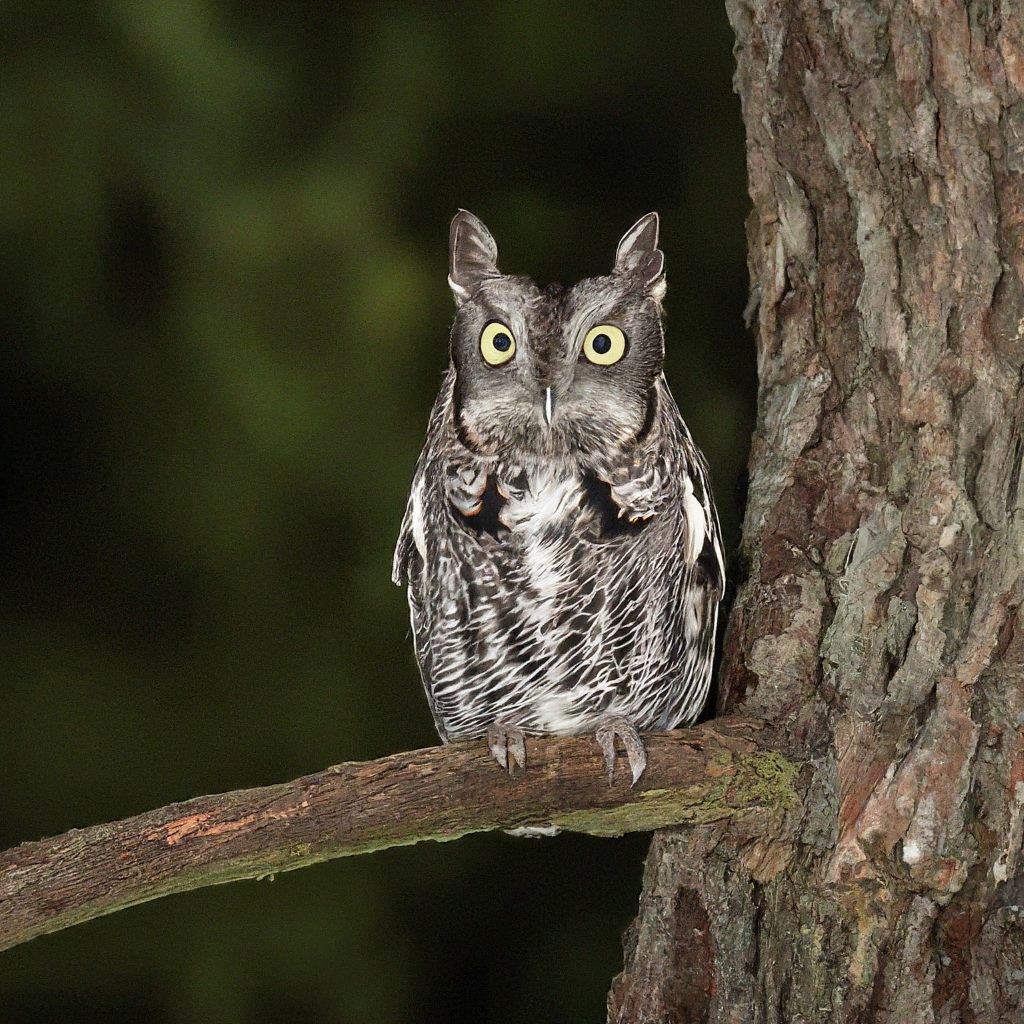
The Eastern Screech-Owl is a small, nocturnal owl species known for its distinctive trilling and whinnying calls that pierce the nighttime silence. These owls are expertly camouflaged to blend in with their surroundings, making them difficult to spot even under the cover of darkness. Eastern Screech-Owls are opportunistic hunters, preying on small mammals, birds, insects, and even fish in wetland habitats. Their haunting calls are a hallmark of the nighttime forest, serving as a reminder of the hidden wonders of the natural world.
- This small owl is widespread across eastern North America, inhabiting forests and woodlands.
- Primarily hunts small mammals and insects, using their excellent hearing to locate prey.
- Can mimic the calls of other birds and insects to attract prey.
- Considered a species of Least Concern, but habitat loss and pesticide use may pose threats.
Eastern Whip-poor-will: Antrostomus vociferus
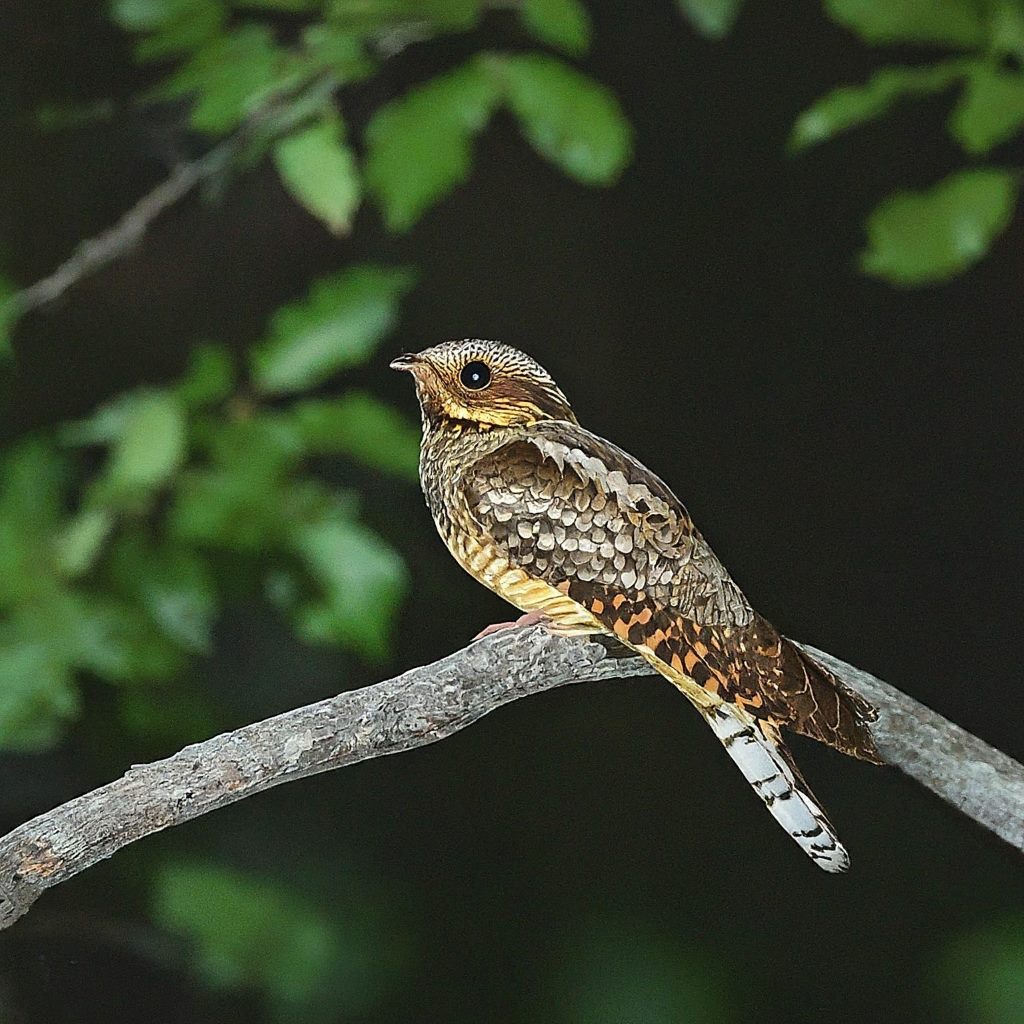
The Eastern Whip-poor-will is a nocturnal bird known for its distinctive, repetitive “whip-poor-will” calls that resonate through the night air. These vocalizations serve multiple purposes, including territorial defense, mate attraction, and communication between individuals. Eastern Whip-poor-wills are well-adapted to their forested habitats, where they hunt for insects such as moths, beetles, and grasshoppers under the cover of darkness. Their cryptic plumage and elusive nature make them challenging to observe, adding to their mystique as creatures of the night.
- This nocturnal insectivore is found in forests across eastern North America and migrates to South America for the winter.
- Known for their distinctive “whip-poor-will” call, used to attract mates and defend territories.
- Forage by flying close to the ground, catching insects in their wide mouths.
- Considered a species of Least Concern, but habitat loss and light pollution may pose threats.
Eurasian Nightjar: Caprimulgus europaeus
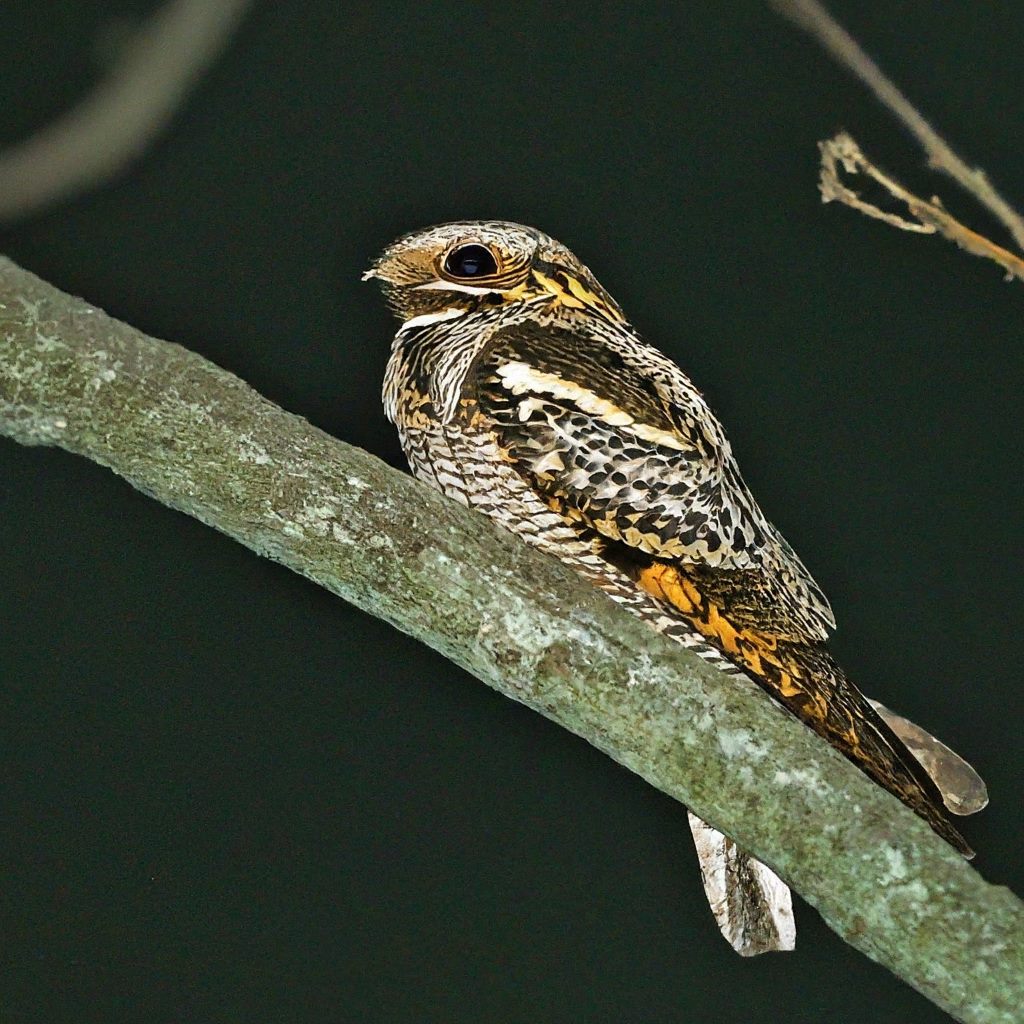
The Eurasian Nightjar is a master of nocturnal camouflage, blending seamlessly into its woodland habitat during the nighttime hours. These birds are renowned for their distinctive churring calls, which echo through the night as they hunt for moths, beetles, and other flying insects. Eurasian Nightjars have specialized adaptations for their nocturnal lifestyle, including large eyes and wide mouths adapted for catching prey on the wing. Their cryptic plumage and silent flight make them stealthy hunters of the nighttime skies.
- Nocturnal bird found across Europe and parts of Asia, known for its distinctive camouflage plumage and churring song.
- Primarily hunts flying insects caught in its wide, whiskered mouth.
- Migratory bird, spending winters in sub-Saharan Africa.
- Classified as Least Concern globally.
European Robin: Erithacus rubecula
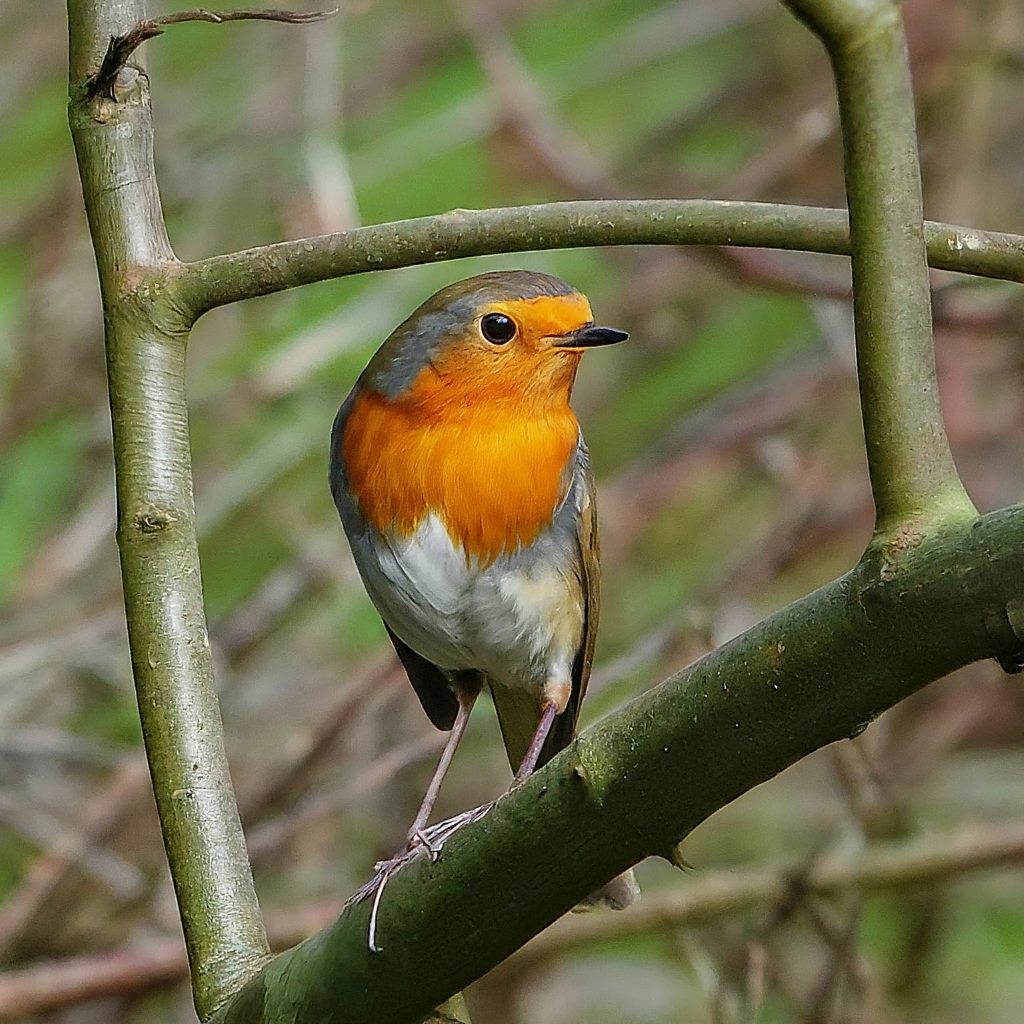
The European Robin is a beloved songbird known for its sweet, melodious song, which can often be heard during the nighttime hours. These small birds are highly territorial and use their vocalizations to defend their breeding territories and attract mates. European Robins are omnivorous, feeding on a variety of insects, fruits, and seeds, which they forage for under the cover of darkness. Despite their small size, they are fearless defenders of their territories, often engaging in aggressive displays to ward off intruders.
- This familiar songbird is widespread across Europe and Asia, renowned for its cheerful song and bright orange breast.
- Omnivorous, feeding on insects, fruits, and berries.
- Territorial birds, often seen defending their boundaries with songs and displays.
- Considered a species of Least Concern globally.
Great Potoo: Nyctibius grandis
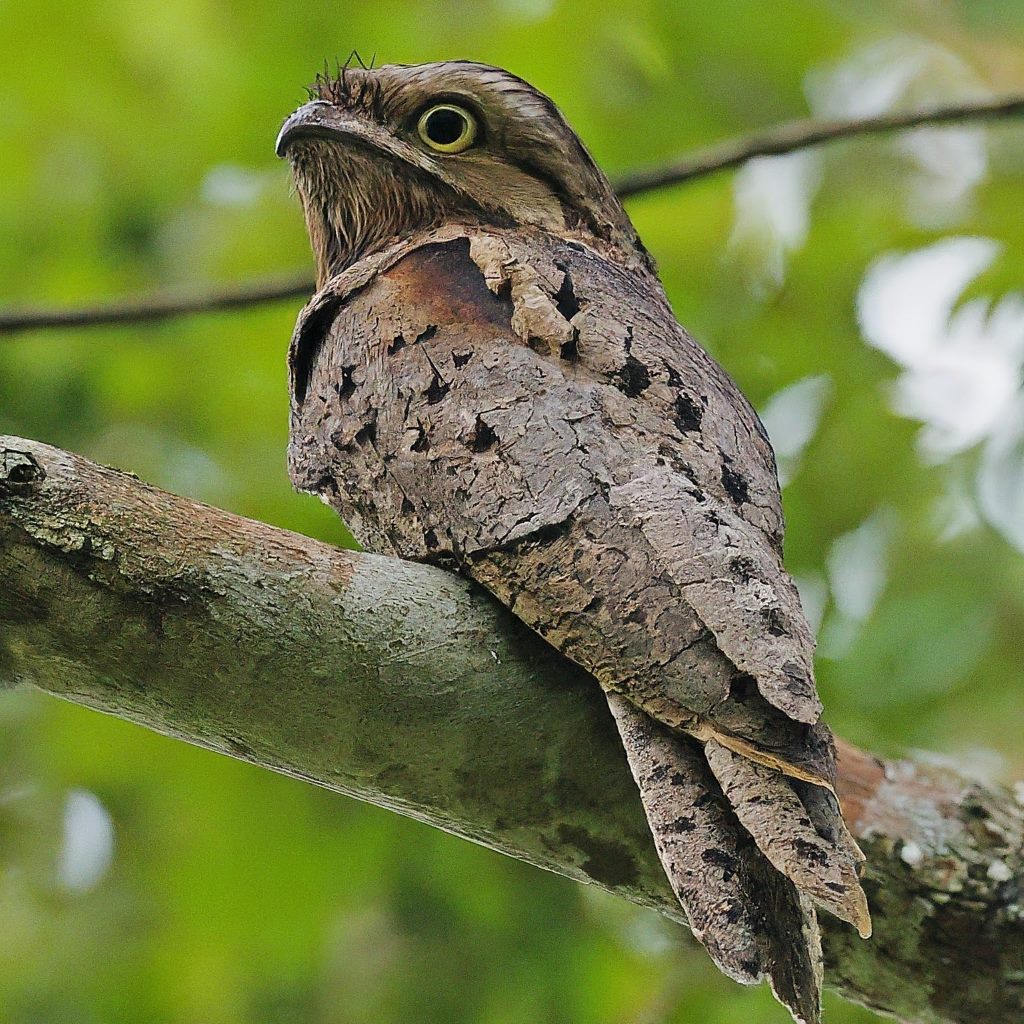
The Great Potoo is a large, nocturnal bird native to Central and South America, known for its bizarre appearance and haunting calls. These birds are expertly camouflaged, resembling dead branches or tree stumps when perched motionless during the daytime. At night, they become active hunters, preying on large insects and small vertebrates. Great Potoos are primarily solitary creatures, roosting alone during the daytime and hunting alone at night. Their eerie calls add to the ambiance of the nighttime rainforest, signaling their presence to other members of their species.
- Large, nocturnal bird found in South America, known for its remarkable camouflage and unique feeding behavior.
- Possesses wide mouths and specialized bill structures for catching large insects in mid-air.
- Solitary birds, roosting motionless during the day and becoming active at night.
- Classified as Least Concern globally.
Great Reed Warbler: Acrocephalus arundinaceus
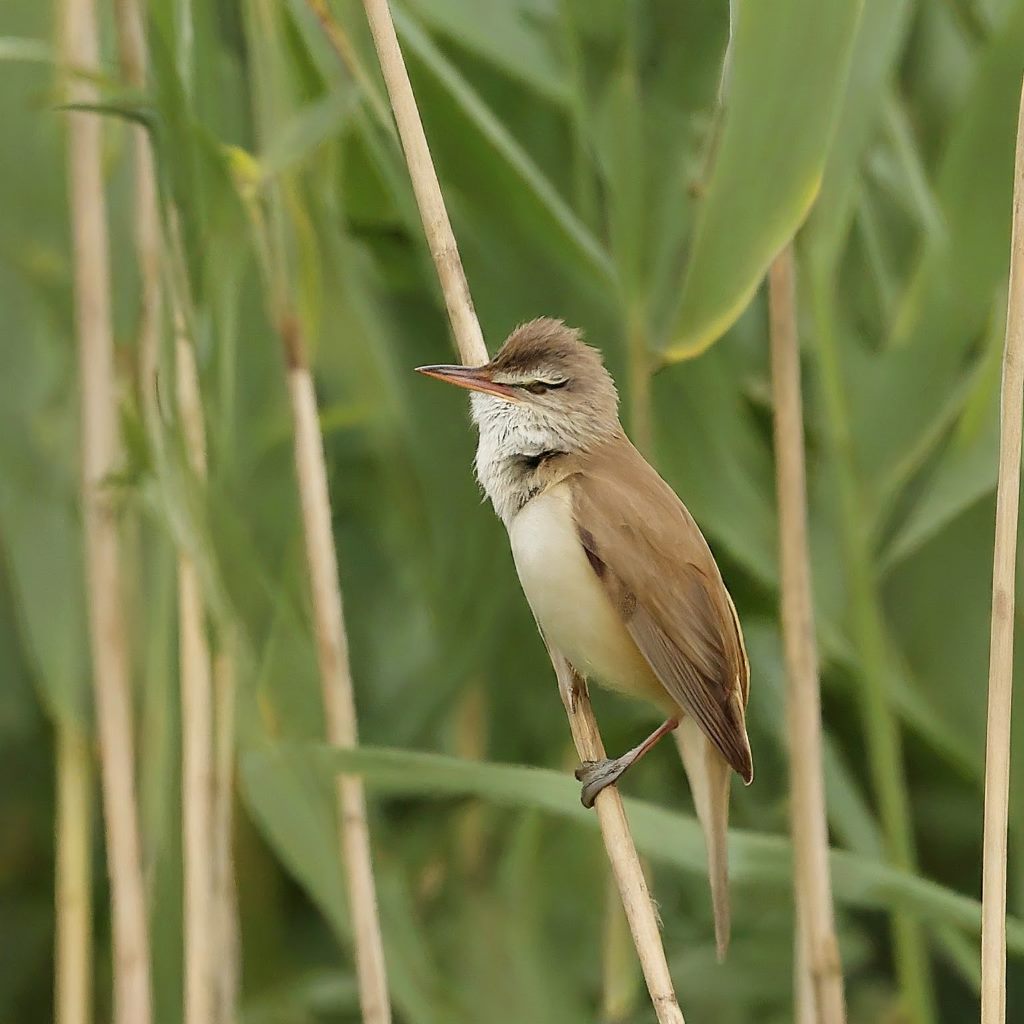
The Great Reed Warbler is a large, migratory songbird known for its powerful, melodious song, which can often be heard during the nighttime hours. These birds breed in wetland habitats across Europe and Asia, where they build their nests among reeds and other dense vegetation. Great Reed Warblers are primarily insectivorous, feeding on a variety of insects and other invertebrates that they capture using their sharp beaks. Their distinctive calls are a familiar sound in wetland habitats, serving as a reminder of the rich biodiversity of these ecosystems.
- Large warbler found throughout Europe and Asia, inhabiting dense reedbeds and wetlands.
- Primarily insectivorous, hunting insects and other invertebrates within the reeds.
- Skilled singers, with complex and melodious songs used to attract mates and defend territories.
- Considered a species of Least Concern globally.
Hermit Thrush: Catharus guttatus
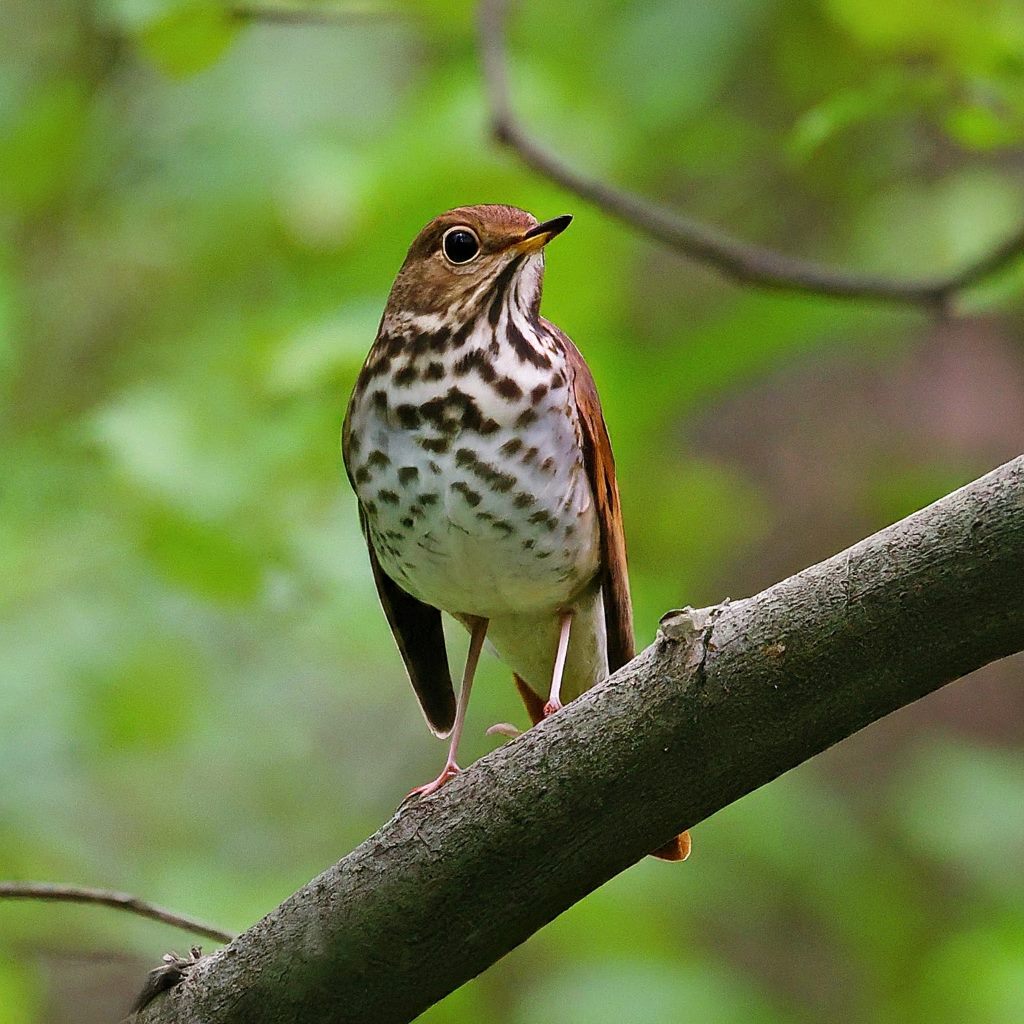
The Hermit Thrush is a small, migratory songbird known for its ethereal, flute-like song, which can often be heard during the nighttime hours. These birds inhabit a variety of forested habitats across North America, where they forage for insects, berries, and other small prey. Hermit Thrushes are known for their solitary nature, often singing from concealed perches in the darkness of the forest. Their haunting calls add to the ambiance of the nighttime wilderness, serving as a reminder of the beauty of the natural world under the cover of darkness.
- Small thrush found in North America, inhabiting coniferous forests and mountains.
- Primarily insectivorous, but also feeds on berries and fruits.
- Known for its beautiful, melancholy song, often heard in dense forests.
- Classified as a species of Least Concern globally.
Killdeer: Charadrius vociferus
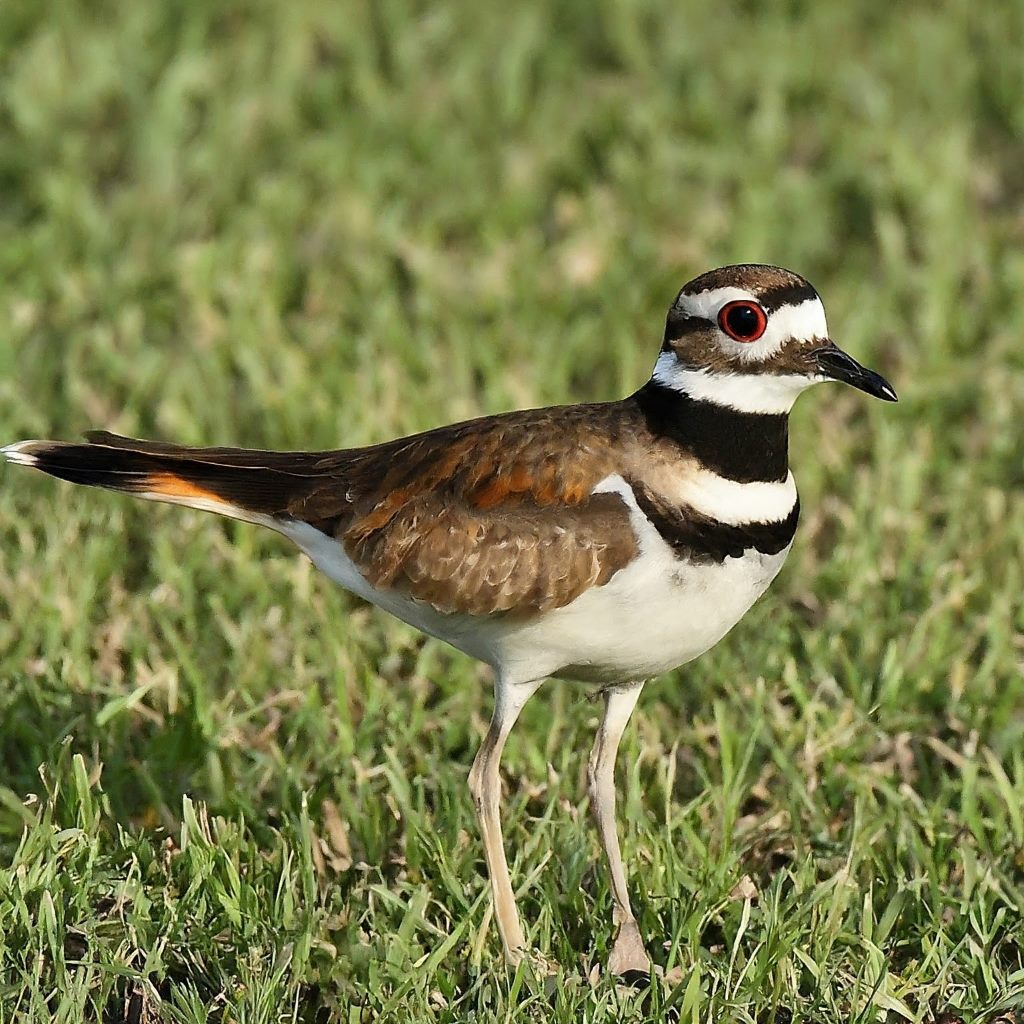
The Killdeer is a medium-sized plover species known for its distinctive, shrill calls that can sometimes be heard during the nighttime hours. These birds are widespread across North and South America, where they inhabit a variety of open habitats such as fields, meadows, and shorelines. Killdeers are primarily crepuscular and diurnal, meaning they are most active during the early morning and late evening hours. However, they may occasionally vocalize during the night, especially in response to disturbances or threats to their nesting sites.
- This shorebird is readily recognized by its loud, shrill “kill-deer” call, often heard throughout America.
- They inhabit diverse areas like grasslands, beaches, and even parking lots, adapting to various environments.
- Primarily ground-foragers, they feed on insects, worms, and other small invertebrates.
- A unique breeding behavior involves feigning injury to distract predators away from their nest.
Northern Mockingbird: Mimus polyglottos
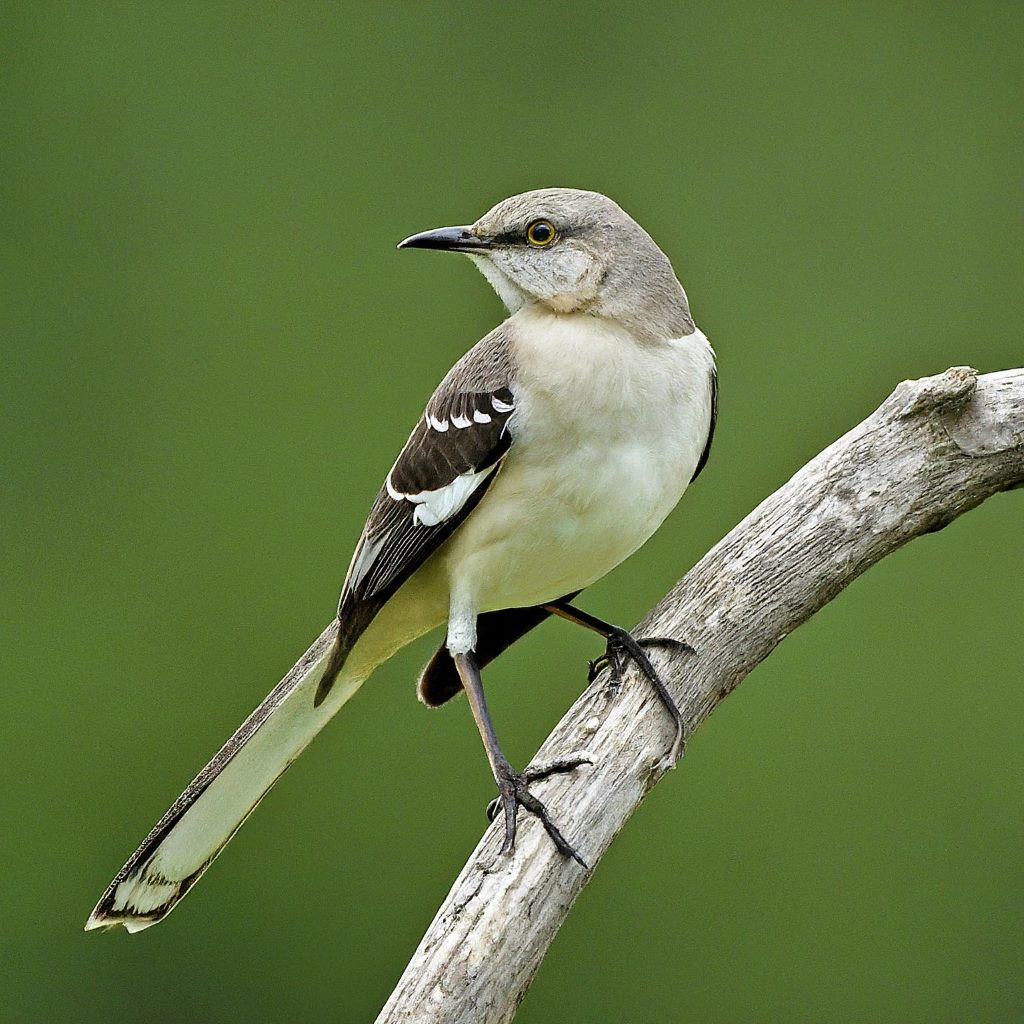
The Northern Mockingbird is a highly vocal songbird known for its remarkable ability to mimic the songs of other birds and even non-avian sounds. These birds are found throughout North America and are particularly common in urban and suburban areas. Northern Mockingbirds are diurnal but may continue to sing into the early evening hours, and occasionally, their vocalizations may extend into the night. Their diverse repertoire of calls and songs adds to the nighttime symphony of urban environments.
- Found in woodlands, gardens, and open areas, offering melodious songs with its diverse repertoire.
- Primarily insectivorous, but also consumes fruits and berries depending on the season.
- Their aggressive territorial defense contributes to their reputation as “mockingbirds.”
Pauraque: Nyctidromus albicollis
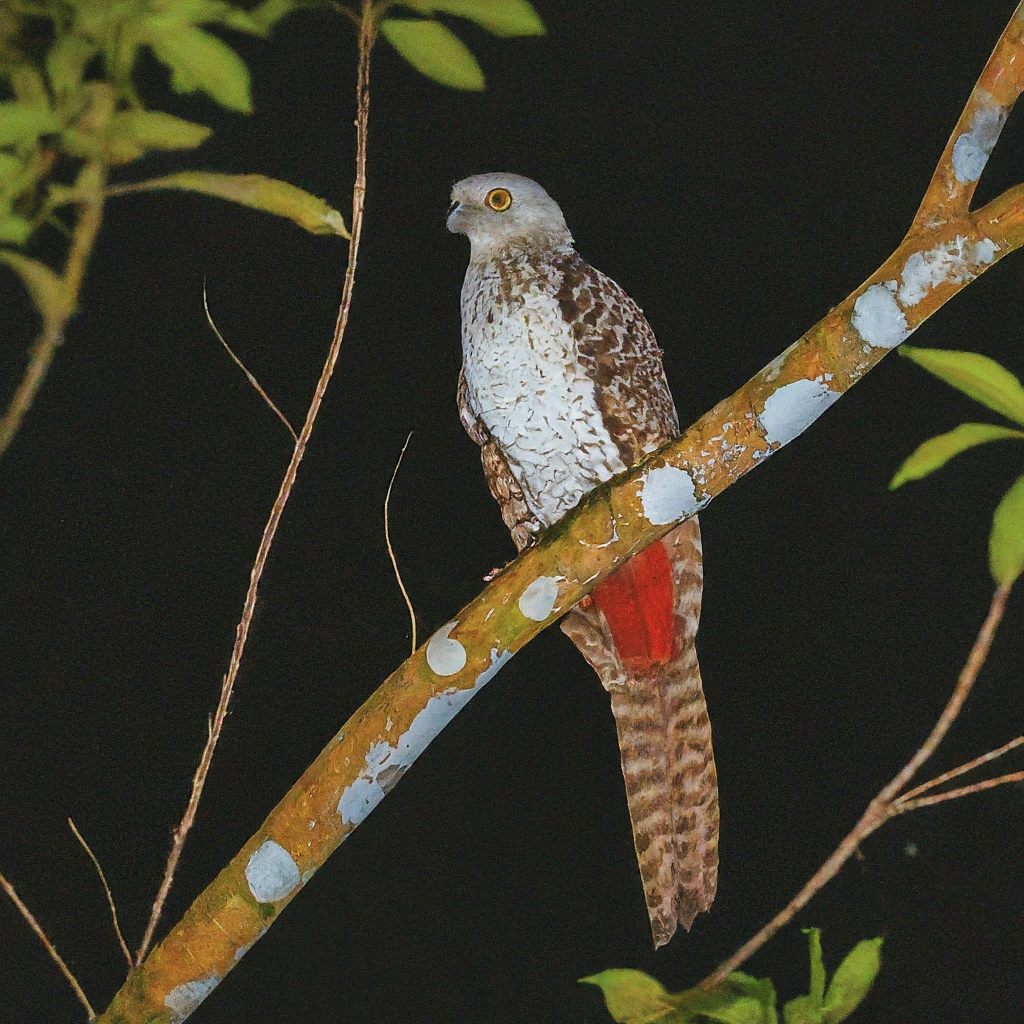
The Pauraque is a nocturnal nightjar species native to Mexico, Central and South America, where it is known for its distinctive whistling calls that fill the night air. These birds are expertly camouflaged, with cryptic plumage that blends seamlessly into their woodland habitats. Pauraques are primarily insectivorous, feeding on a variety of flying insects that they capture in flight using their wide mouths. They are often heard calling during the nighttime hours as they defend their territories and search for mates.
- Possesses wide gape and short legs, adapted for catching flying insects on the wing.
- Primarily solitary birds, except during breeding season when they engage in elaborate courtship displays involving aerial maneuvers and vocalizations.
- Considered a species of Least Concern, but habitat loss and pesticide use could pose future threats.
Tawny Owl: Strix aluco
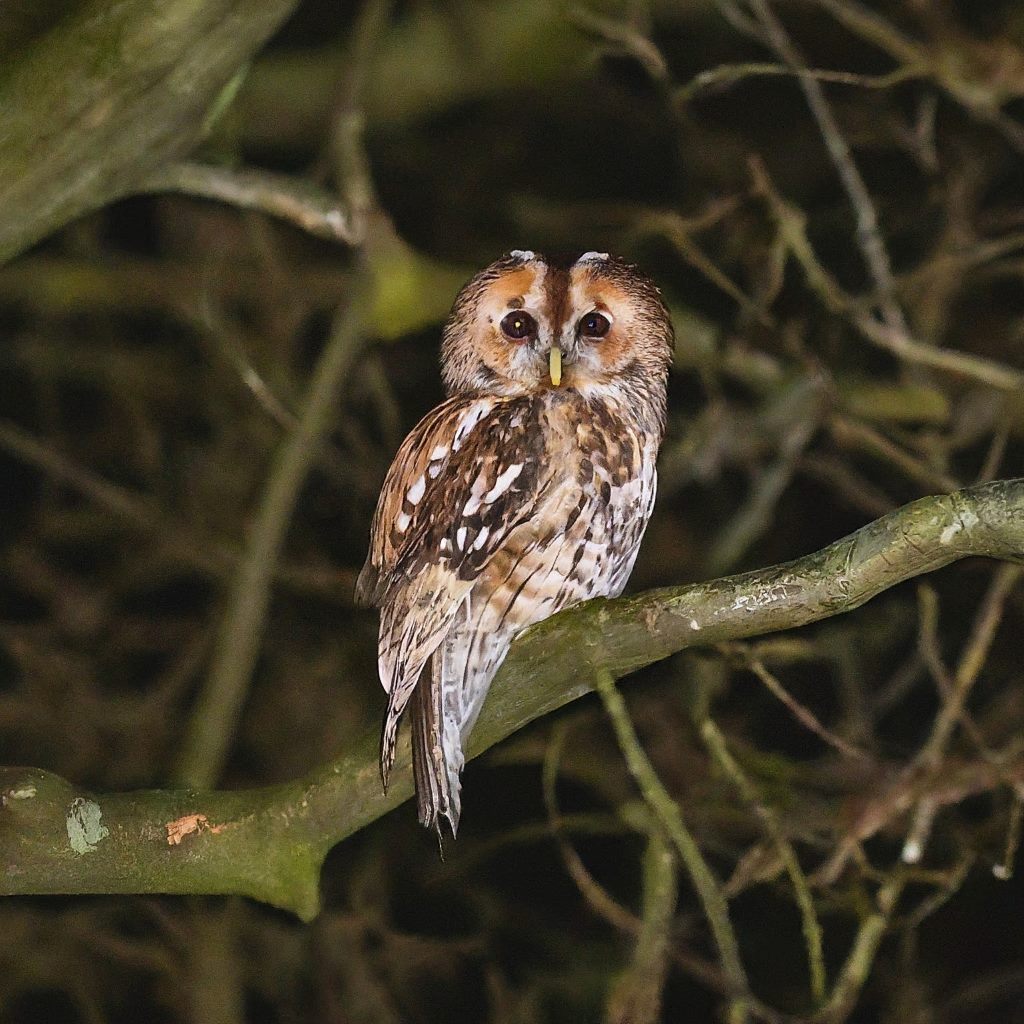
The Tawny Owl is a medium-sized owl species native to Europe and parts of Asia, known for its haunting hoots that echo through the nighttime forests. These birds are highly adaptable and can be found in a variety of woodland habitats, where they hunt for small mammals, birds, and insects under the cover of darkness. Tawny Owls are primarily nocturnal and are most active during the nighttime hours when they use their keen hearing and silent flight to locate and capture prey. Their calls are a familiar sound in European woodlands, evoking a sense of mystery and enchantment.
- Known for their distinctive hooting calls, often heard at night or dusk.
- Classified as a species of Least Concern globally, but local populations may face threats like habitat loss and pesticide use.
Upland Sandpiper: Bartramia longicauda
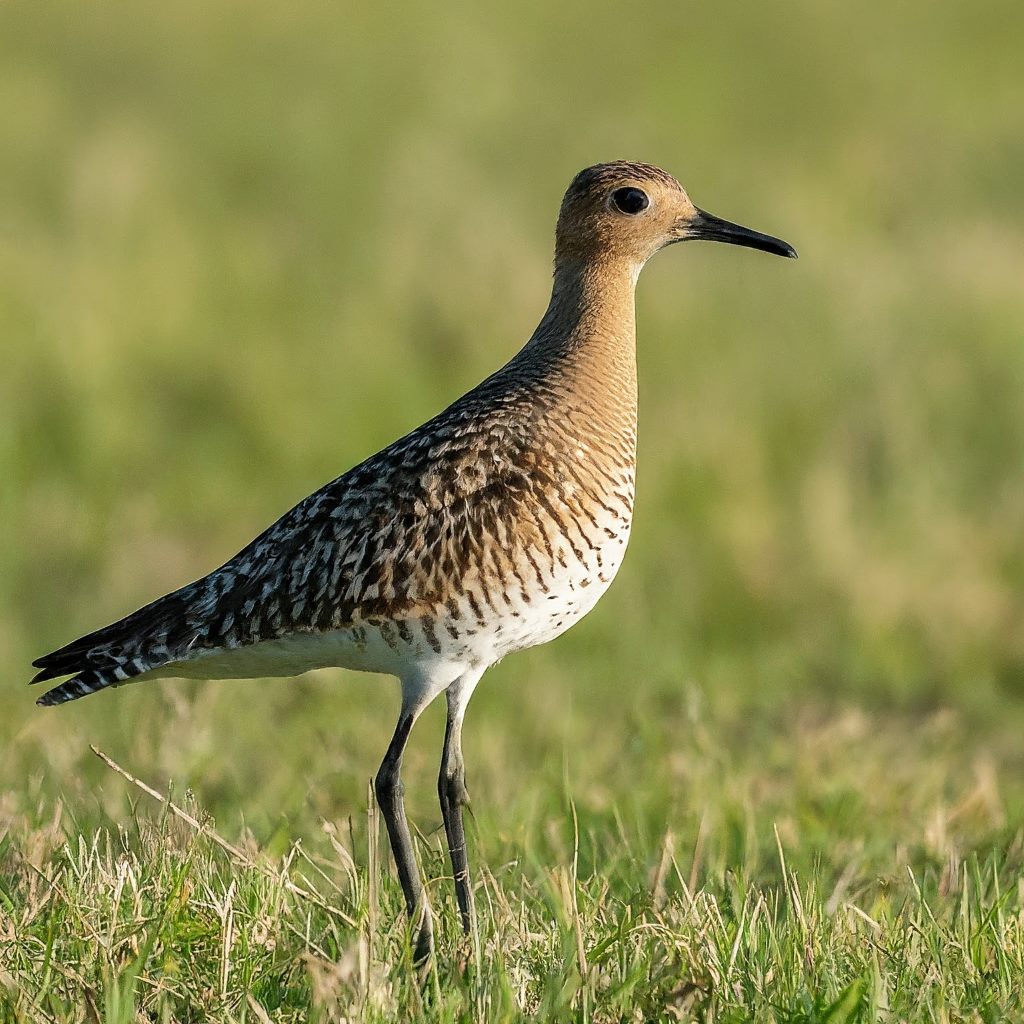
The Upland Sandpiper is a migratory bird species found in grasslands and fields across North America during the breeding season. These birds are known for their distinctive, melodious calls, which they may emit during both day and night, especially during the breeding season. Upland Sandpipers are crepuscular and diurnal, meaning they are most active during the early morning and late evening hours. However, their vocalizations may continue into the night, adding to the nocturnal soundscape of their habitats.
- This medium-sized shorebird is known for its evocative “wolf-whistle” song, heard across North American prairies during summer.
- Unlike most shorebirds, they prefer grasslands and avoid wetlands, acting as an “indicator species” for healthy prairie ecosystems.
- They feed on insects and other invertebrates gleaned from the ground.
- Unfortunately, their populations have declined significantly due to habitat loss and fragmentation.
Western Meadowlark: Sturnella neglecta
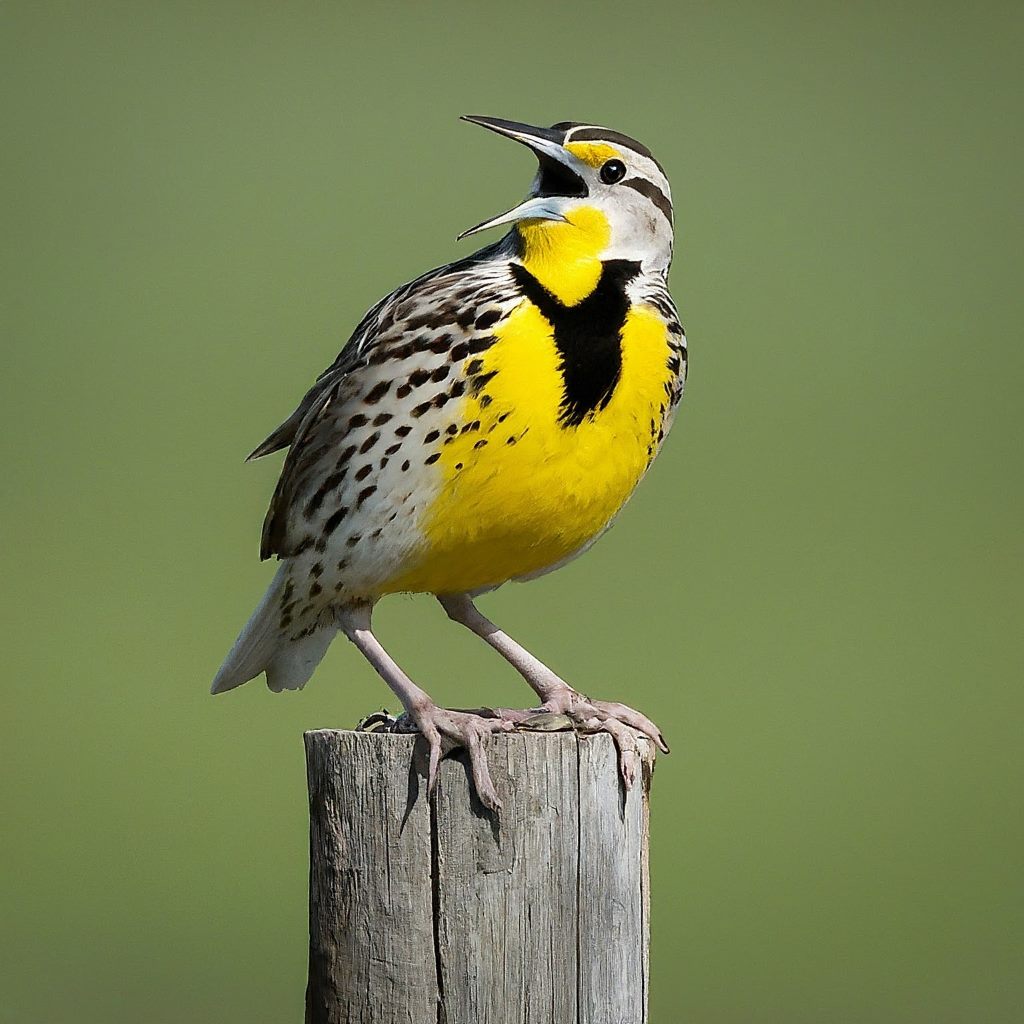
The Western Meadowlark is a songbird species native to North America, known for its beautiful flute-like songs that are often heard during the daytime. However, these birds may continue to sing into the early evening hours, especially during the breeding season. While primarily diurnal, Western Meadowlarks may occasionally vocalize at night, particularly when defending territories or communicating with other birds. Their distinctive calls contribute to the nighttime chorus of prairies and grasslands across their range.
- This grassland songbird is found in western North America, known for its distinctive yellow breast and cheerful song.
- They feed on insects, seeds, and berries, playing a crucial role in grassland ecology.
- They perform elaborate courtship displays involving aerial flights and singing, often perched on prominent landmarks.
- While not yet endangered, their populations are declining due to habitat loss and fragmentation.
Yellow-breasted Chat: Icteria virens
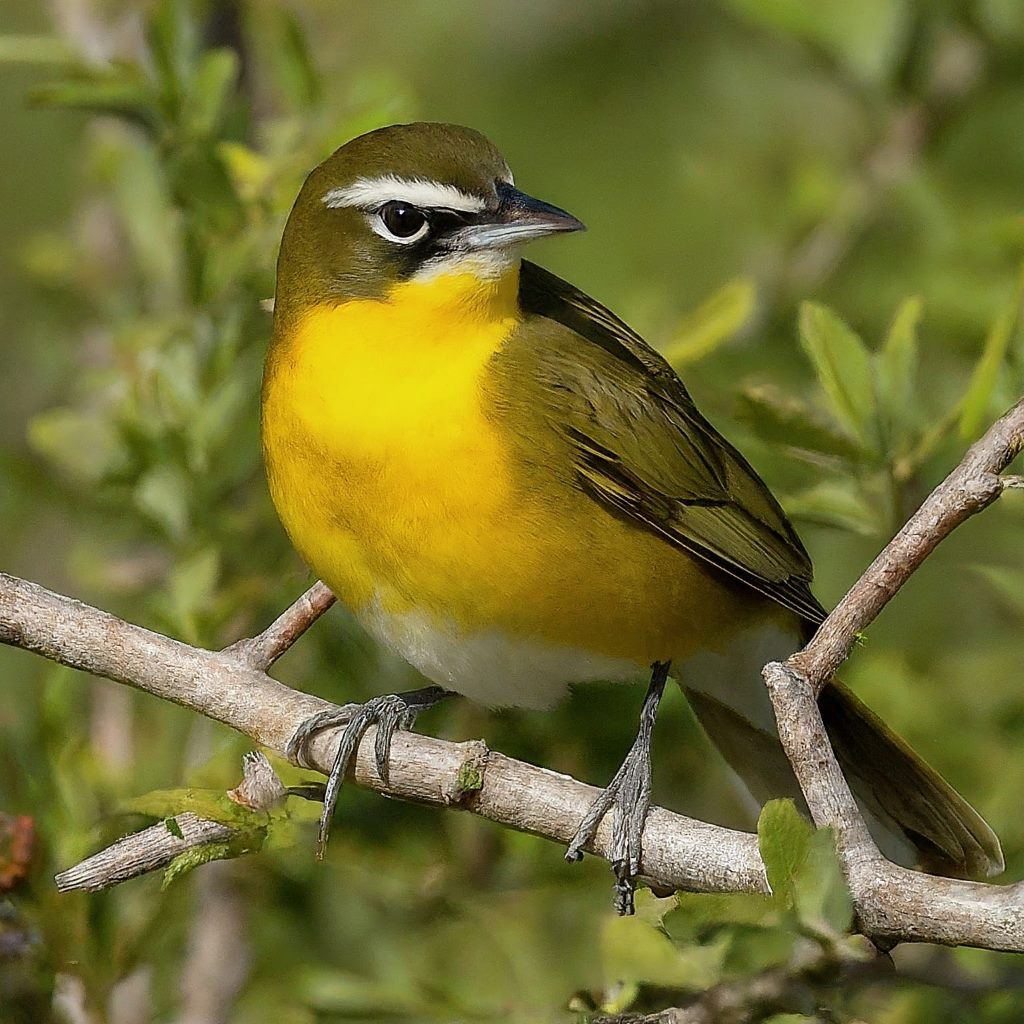
The Yellow-breasted Chat is a large songbird species found in scrubby habitats across North and Central America. These birds are known for their loud, varied songs and calls, which they produce throughout the day, especially during the breeding season. While primarily diurnal, Yellow-breasted Chats may continue to sing into the early evening hours and occasionally vocalize at night, particularly during moonlit nights or in response to nearby disturbances. Their diverse vocalizations add to the nighttime cacophony of their habitats, creating a rich auditory tapestry for those who listen closely.
- This energetic songbird inhabits dense thickets and shrublands across North America, captivating observers with its diverse vocalizations.
- Their song includes mimicry of other birds and complex whistles, making them skilled vocalists.
- They primarily feed on insects and berries, foraging actively within their dense habitats.
- Their populations are declining due to habitat loss and fragmentation, requiring conservation efforts to ensure their future.
Summary:
The nocturnal world of birds in the USA is filled with an astonishing variety of vocalizations, each contributing to the rich tapestry of nighttime sounds. From the haunting calls of owls to the melodious songs of nightingales, these nocturnal singers play vital roles in their ecosystems and captivate the imaginations of birdwatchers and nature enthusiasts alike.
By understanding the behaviors and habitats of these nocturnal birds, we can gain a deeper appreciation for the intricate interconnectedness of life under the cover of darkness. So, the next time you find yourself outdoors on a moonlit night, take a moment to listen to the enchanting symphony of the nocturnal birds and let their melodies transport you to the magical realm of the night.

94% of pet owners say their animal pal makes them smile more than once a day. In 2007, I realized that I was made for saving Animals. My father is a Vet, and I think every pet deserves one. I started this blog, “InPetCare”, in 2019 with my father to enlighten a wider audience.
